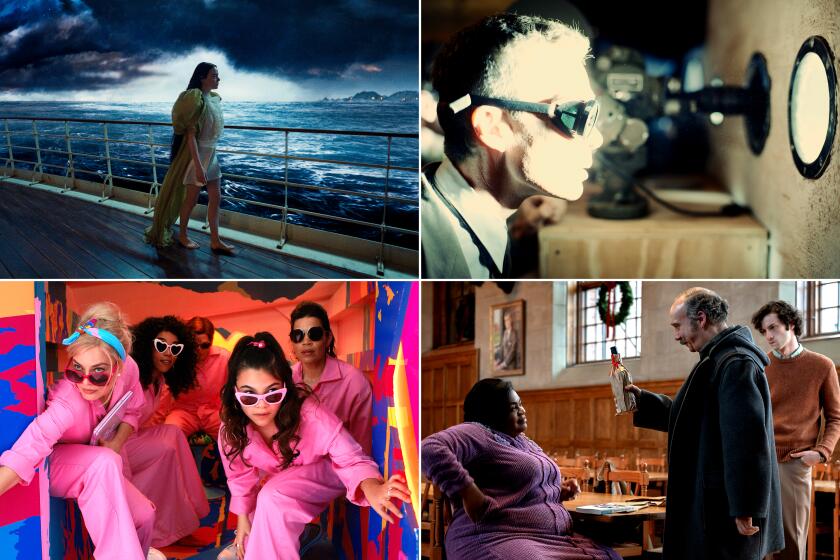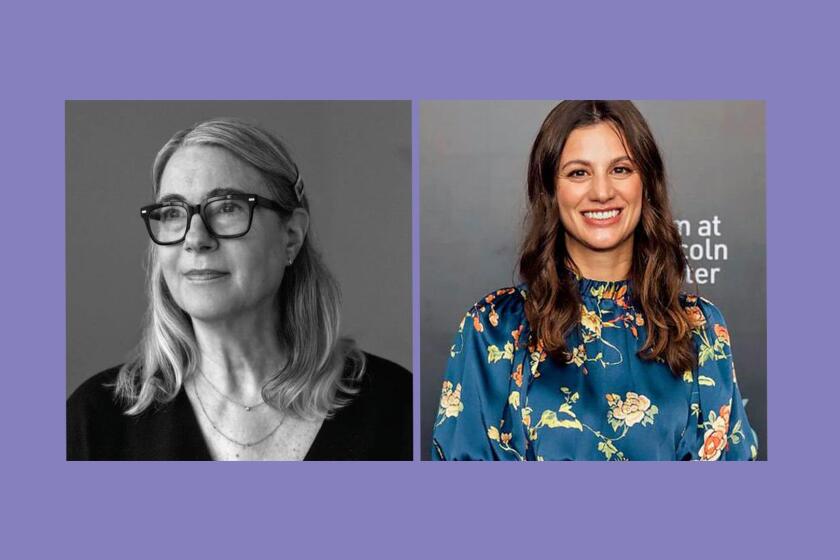That iconic hat was a challenge. Then came the other 1,000 ‘Oppenheimer’ costumes

Ellen Mirojnick, the costume designer who earned an Emmy Award for transforming Michael Douglas into flamboyant entertainer Liberace in “Behind the Candelabra,” now has her first Oscar nomination — for a wardrobe and characters who couldn’t be more different: the politicians, soldiers and scientists in “Oppenheimer.”
Director Christopher Nolan’s sprawling film chronicles how theoretical physicist J. Robert Oppenheimer (played by Cillian Murphy) came to lead the Los Alamos laboratory in New Mexico, part of the Manhattan Project, a World War II program to develop an atomic bomb.
In her first production with Nolan, the veteran designer’s reputation as a creative problem solver was put to the test. With a “very small budget,” she had to distill the three-hour film’s 180-page script that covers 40-plus years and includes 73 speaking parts and produce a 1,000-costume wardrobe that easily telegraphs shifting time periods, characters’ social status and even their mental state. The extra-compressed 57-day shoot also required her to consider how costumes played in color, black and white, and on Imax screens.
Her solution? For each decade, extract the essential silhouette and then distinguish the characters with collars, colors, lapels, fabrics and the occasional really great sweater. Mirojnick subtly added signatures to characters’ wardrobes that helped audiences recognize them through time. And by using the black and white photo filter on her iPhone, the designer could see how the costumes registered without color. She custom-made many neckties, which became a helpful focal point, especially on the giant Imax screen.
Though every item was drawn from historical research or was an actual vintage garment, she also was directed to add a touch of modernity.

“Chris’ notes were very specific in the beginning. He was not interested in making a stylized film or a precious period piece,” Mirojnick says. He did specify that no one but Oppenheimer should wear a hat (except those in military uniforms.)
In life and art, Oppenheimer’s hat and pipe have long been iconic. As a symbol of its owner, the hat alone sat on a particle accelerator for the cover of the first Physics Today magazine in 1948. Since the film’s premiere, the hat has become a key piece of Oppenheimer cosplay and Halloween costumes.
Yet Mirojnick had only black-and-white photos and no written descriptions to guide construction of the famous hat, which is as iconoclastic as its wearer. The crown was characteristic of a pork pie but had an irregular hand-formed crease; the brim was wide like a cowboy hat but not as stiff. The color and materials were lost to history.
“The hat needed to be flipped up, flipped down. It needed to be many different things,” she says. It needed to reflect the true essence of the New Mexico environment. It needed not to feel like a piece of cardboard sitting on his head.”

Hat makers in Italy and New York made attempts, but Hollywood specialist Baron Hats in downtown Los Angeles found the right combination of fit and feel with undyed South American felt and a custom leather hatband.
In a fitting with Murphy early in production, Mirojnick was able to find the look that would carry the actor through the production — voluminous, pleated pants, blue shirts and a touch of ruggedness when he’s in New Mexico. Mirojnick and Nolan spread photos of the scientist across a conference table and found “his silhouette really didn’t change from early on, even through when we see him in the early ‘60s,” she says. In Los Alamos, however, the Oppenheimer myth-making came into focus.
“He did everything purposefully with his presentation throughout time, and specifically as he opened Los Alamos and stepped into his power. It was his moment of glory. All of that imagery, how he wanted to project himself, was concocted. He knew that pipe would be important and the hat would be important. He knew just how his presentation would affect all else that would unfold,” she says. Mirojnick also had a Santa Fe craftsman reproduce the silver and turquoise belt buckle that the scientist wore there.
Similarly, Lewis Strauss (played by Robert Downey Jr.) is a self-made, wealthy businessman, philanthropist and member of the Atomic Energy Commission. Mirojnick dressed him in exactingly tailored suits made from ultra-fine woolens and put monograms on his shirts, handkerchiefs and even the labels inside his clothes.
The actor and director Christopher Nolan share a mutual interest in conveying a character’s emotional conflict through close-ups that linger on an actor’s face and allow the audience to feel inner turmoil.
“He only knew the best, and that is what he became. He had the finances to do that,” Mirojnick says. Several scenes show the Strauss ensembles in color and also in black and white, so Mirojnick highlighted textures and contrasting colors that worked in both palettes.
Mirojnick calls Manhattan Project consultant and Nobel-winning physicist Isidor Rabi (David Krumholtz) Oppenheimer’s “only friend. He is his touchstone throughout the film,” she says. She made him a nubby brown overcoat that gave teddy bear vibes and a wardrobe of earth tones and huggable fabrics.
She turned fittings into character explorations with creative methods, notably when helping Emily Blunt realize how to play Kitty Oppenheimer, a botanist turned into an unhappy housewife.
Will Oscar night be a victory lap for “Barbenheimer”? Who will take home Academy Awards? Emma Stone or Lily Gladstone? Paul Giamatti or Cillian Murphy?
“She had resigned herself to giving over her ambition to him,” Mirojnick says of Kitty. “And clothing was not her priority whatsoever.” Mirojnick approximated how Kitty, a depressed alcoholic, might have dressed herself by tossing potential wardrobe items in a pile on the floor and having Blunt choose from there.
Kitt’s look “absolutely needed to be disassembled, but I didn’t want anyone to take notice of it. There’s a fine line between naturalness and a costume,” says Mirojnick, summarizing a costume designers’ ultimate quest — to have “what you notice not be noticeable.”
The answer to that pursuit can be found only in something given little attention in laboratories, classrooms and battlefields — the undefinable, unscientific realm of art.
More to Read
From the Oscars to the Emmys.
Get the Envelope newsletter for exclusive awards season coverage, behind-the-scenes stories from the Envelope podcast and columnist Glenn Whipp’s must-read analysis.
You may occasionally receive promotional content from the Los Angeles Times.








